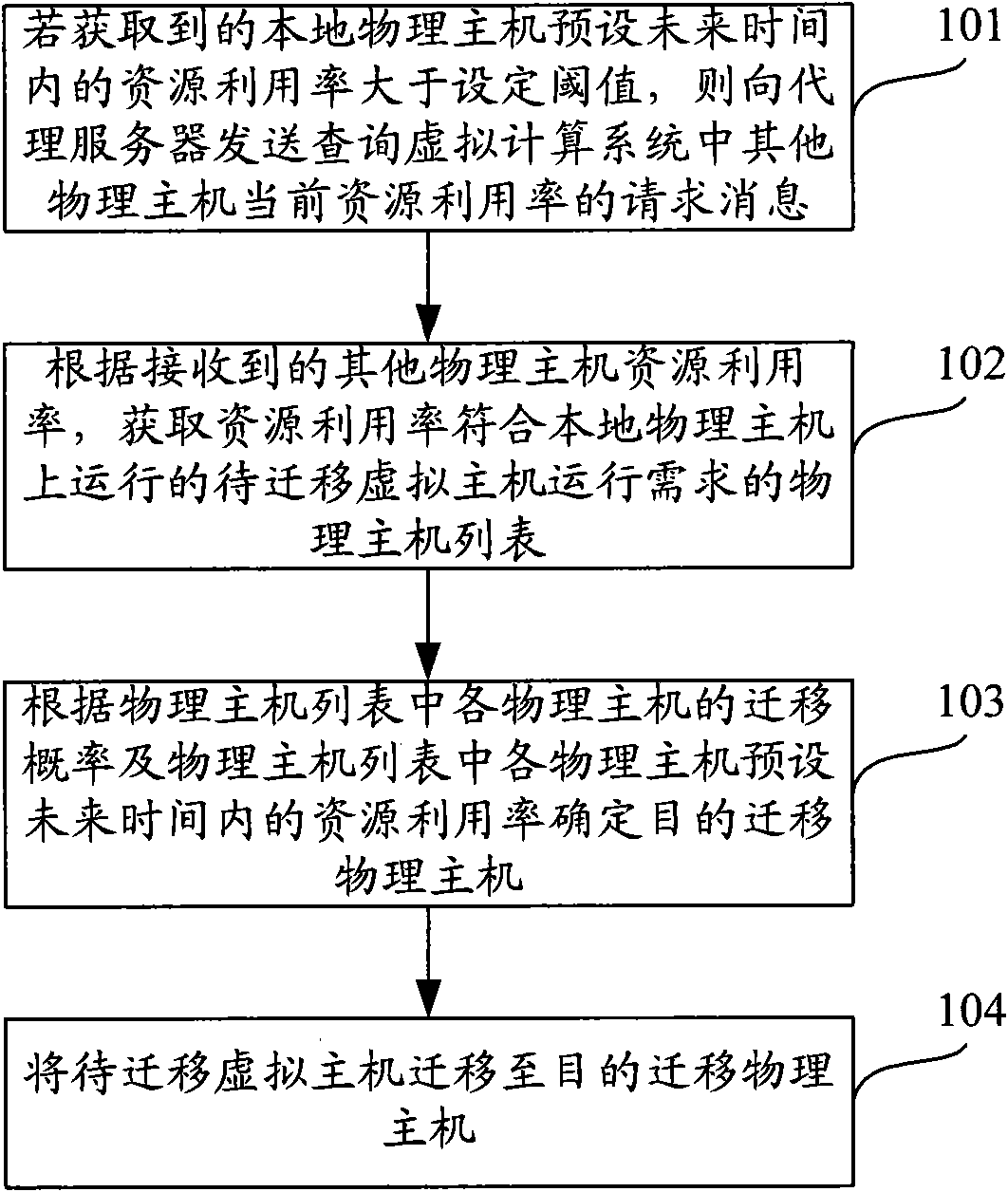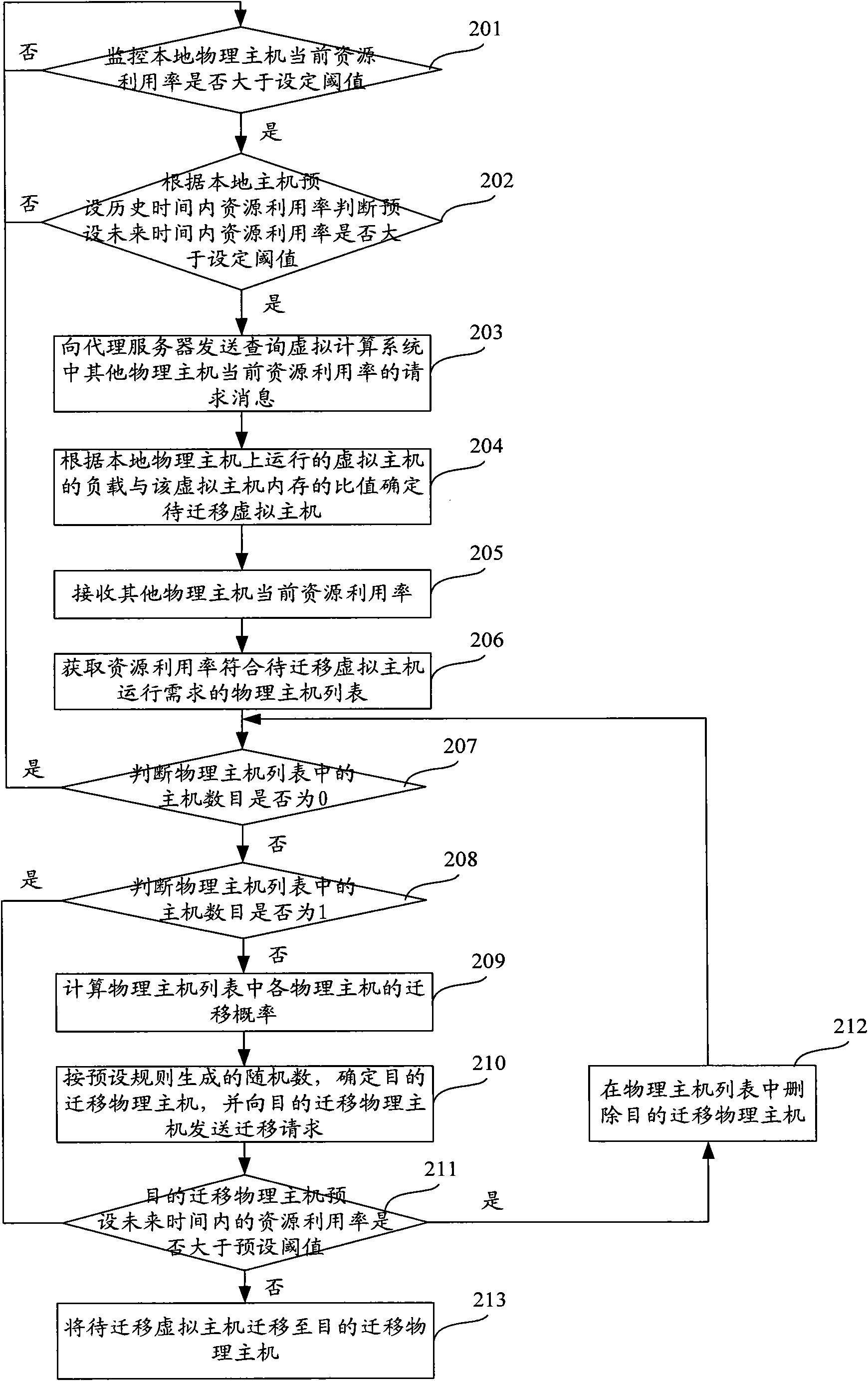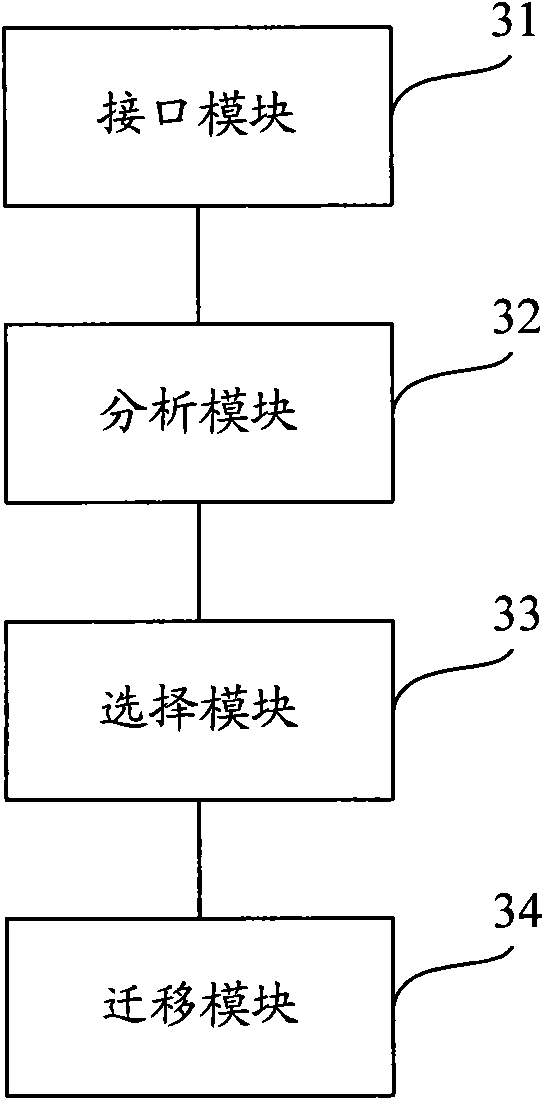Method and device for load balancing of resources of virtual machine
A load balancing and virtual machine technology, applied in the computer field, can solve problems such as virtual computing system instability, and achieve the effects of avoiding migration overhead, resolving conflicts, and saving network resources
- Summary
- Abstract
- Description
- Claims
- Application Information
AI Technical Summary
Problems solved by technology
Method used
Image
Examples
Embodiment Construction
[0022] The technical solutions of the present invention will be described in further detail below with reference to the accompanying drawings and embodiments.
[0023] figure 1 A flowchart of a virtual machine resource load balancing method provided by an embodiment of the present invention, such as figure 1 As shown, the method includes:
[0024] Step 101, if the obtained resource utilization rate of the local physical host in the preset future time is greater than the set threshold, then send a request message to query the current resource utilization rate of other physical hosts in the virtual computing system to the proxy server;
[0025] The monitoring engine of the local physical host monitors the load of the local physical host in real time, and the load is generally reflected by resource utilization (utilization). The resource utilization rate includes the resources occupied by the virtual machine resource load and the resources occupied by other processes running on...
PUM
 Login to View More
Login to View More Abstract
Description
Claims
Application Information
 Login to View More
Login to View More - R&D
- Intellectual Property
- Life Sciences
- Materials
- Tech Scout
- Unparalleled Data Quality
- Higher Quality Content
- 60% Fewer Hallucinations
Browse by: Latest US Patents, China's latest patents, Technical Efficacy Thesaurus, Application Domain, Technology Topic, Popular Technical Reports.
© 2025 PatSnap. All rights reserved.Legal|Privacy policy|Modern Slavery Act Transparency Statement|Sitemap|About US| Contact US: help@patsnap.com



